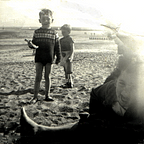What is Hogmanay?
The obscure origins of Scotland’s biggest festival
Hogmanay is the word used to describe the very distinctive Scottish celebration of New Years’s Eve. This includes the singing of Auld Lang Syne at midnight — see here
Another tradtiton is ‘first-footing’ — the welcoming the first visitor to the house after midnight. First footers are encouraged to carry a lump of coal and gifts of whisky and shortbread. According to custom, tall tall dark strangers bring good luck.
Word Origin
There are a number of theories as to the origin of the word Hogmanay:
- Hoggo-nott was a Scandinavian word for the shortest day. Evidently they needed work on their calendars as this is the 21st December.
- The Flemish phrase hoog min dag means “great love day”. This has not always apparent in the fiery eyes of dedicated revelers.
- The Gaelic for “new morning” is oge maiden.
- Homme est né is French for “Man is born”.
None of these explanations seems entirely convincing but the BBC has gone with Dr Donna Heddle from the University of the Highlands and Islands: “The most likely source seems to be French.
